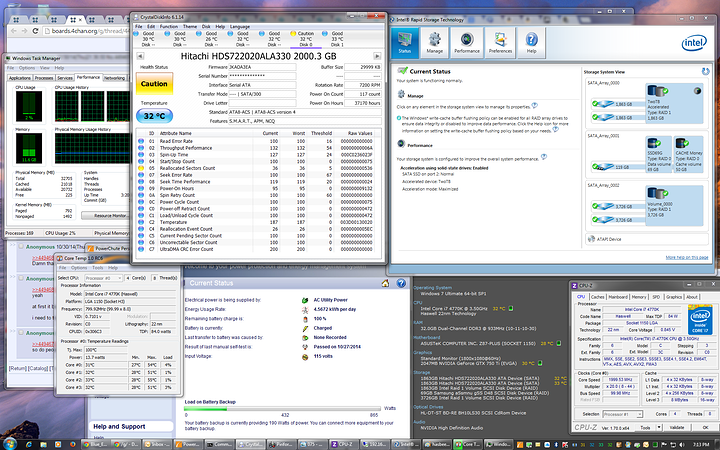Disclaimer, Specs, and Background
I had trouble categorizing this, especially since there are hardware, firmware, and software implementations but I think it's ultimately a software issue here. Let me know if I'm wrong.
I'm working a project - I had some extra hardware laying around that I couldn't get rid of so I bought some other parts to see if I can get a capable gaming machine out of it.
So far I have it's working, but I'm working on optimizing and benchmarking, then OCing, followed by more benchmarking. So far the configuration is:
- Core i5 750
- ASUS P7H55-M motherboard
- 4x 2GB DDR3-1333 RAM
- MSI GTX 570 (reference/blower) / EVGA GTX 760 ACX SC.
- 500GB Seagate Barracuda HDD
- 64GB Crucial M4 SSD
- Rosewill 750W PSU
- Win7 Home x64
From personal experience, 64GB SSDs don't cut it as system drives as a modern Win7 x64 will easily chew through 40GB, especially with all the updates. I got fed up with space management. I doubt the person I have in mind for this setup will have the patience or technical know-how to deal with it either. However,
I want to get use out of the SSD, so I'm looking for a caching solution.
I recall Intel having a good solution in the form of the Smart Response Technology, which is supposedly compatible with their 5-series of chipsets, which includes the H55 if I'm not mistaken. I also recall the SSD caching feature debuted on Z68, and if memory serves, the SSD caching is not compatible on older chipsets. If it is somehow compatible, could someone let me know?
I discovered Windows Vista had a ReadyDrive (or NV caching) feature, but I can't seem to find a way to configure it, nor find any mention of it within Windows 7 for that matter. It seems to be what I want - to cache system files to the SSD to speed up boot performance and what not.
I've also seen 3rd party software caching solutions, but none appeal to me, as they all seem to be paid software, which is quite frankly way out of my non-existent budget.
What I've done now is dedicated the M4 SSD as a ReadyBoost drive. However, since the feature seems to be limited to 32GB, I've also moved the pagefile to the SSD as well. I also get the sneaking suspicion that this configuration isn't going to do what I want it to do. Could someone verify that? Does anyone know of a good SSD caching solution?

